
Monument 300 – Chasing Watermarks
Carey Park Review for Magazine United Korea
Two buses departed along. When they entered East Main Rd, ‘Cine Radio’ started. After ‘Take on Me(feat.)’ was played on the radio, an old saying of ‘Man and melons are hard to know’ was read over the speaker, which was like an introduction that implies the nature of the journey. Very brief explanation on how we are going to make ‘Cine Radio Bus’ show together was given. DJ in my bus was Minouk LIM, the artist herself, and Sunghoon Han, a sociologist, was the host of the live show in the other one, timing the speed of two buses.
“What is the 38th line? “
“Isn’t it just same with MDL, Military Demarcation Line? “
Some quick, improvised questions were thrown in an offhand manner by the passengers, while an old Korean song, ‘Imjin River’, the voices of an ironmaster, a waitress of a small local restaurant, and the interview with a 100 years-old-woman were heard as well. The conversation between a father and a young daughter was following humorously. was flowing behind them.
Father : Honey, have you ever heard of ‘DMZ’?
Daughter : DMG? No Dad. But I know ‘OMG’.
Father : What’s that?
Daughter : Oh My God.
Father : (Laugh )
Daughter : Oh, I see, I see. Dad. I know what DMG is!
Father : What is it, honey?
Daughter : Dog My God!!!
Listening to the new song of Uh-uh-boo project band, we headed toward Cheorwon. Sepulchral voice of Hyun-jihn Baik was comes out of the speaker; I found the road, and I got lost, and I found the road, and I got lost, and I found the road, and I got lost...
On December 18, 2014, in the area of Waterworks Center located at Sayo-ri, Cheorwon-eup, Cheorwon-gun, Gangwon-do, a participatory performance took place. The work was titled as ‘Monument300 – Chasing Watermarks’, a project searching for 300 people who perished from the site of Waterworks Center in Cheorwon. So, the artist rather led the audiences to face the identity of the place and the historical trauma
This project started in the bus departing from Seoul. As if it was a live show where the audiences participate actively as the guests of the show, Lim and Han became DJs for the show, crossing between the fiction and non-fiction, guided us to the spot in Cheorwon.
It was 68 F with wind chill and the coldness armed us. Waiting for us, in the site of the Waterworks Center, ice sculptures were fallen down on the ground here and there. Among the statues, transparent objects were hidden. The visitors had to make each step very cautious as if they “dodge landmine”, using hand lantern to flash a beam on the ground to find the objects.
The monuments have to be discovered first to be preserved. When someone finds an object, he or she notes the number written on it and share the records of the 300 people later.
The artist mentioned that the objects were inspired by the transparent "digital watermarks." For instance, paper bill has a portrait drawn on it that is only visible under the light. Since watermark is able to be hidden with its transparency and reacts to light, the information embedded into the watermark is stored in a form that cannot be easily reproduced, like the case of copyrights protection.)However, there is no information embedded in the watermarks in the site of Waterworks Center yet, for no historical record about the 300 people has been found so far. Therefore, the objects are fragile and transparent, rather asking for the future information and its documentations to be found - the monuments that cannot be commemorated.
The careful searching for the 300 watermarks is for the memory of people who were forgotten in the history. Mourning over the death of people to give the deep condolences. I walked on the ground of the center. The sound of chanting which I had heard in ‘Cine Radio’ in the bus before was following in my footsteps.
Isn’t it through the cultural imagination that we could possibly have the experience of healing the historical trauma, facing the identity we lost, and overcoming them? It was the site of ‘condolence’ where the forgotten is revoked, and the closed is reopened. The solemn site created through the imagination of the artist was beautiful. It was so because facing historical trauma has a meaning of leaving a record of myself as well, by searching for the root of the wounds in my mind.
Translation Hojin Jang
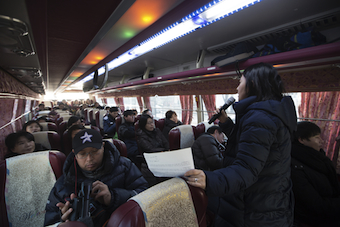
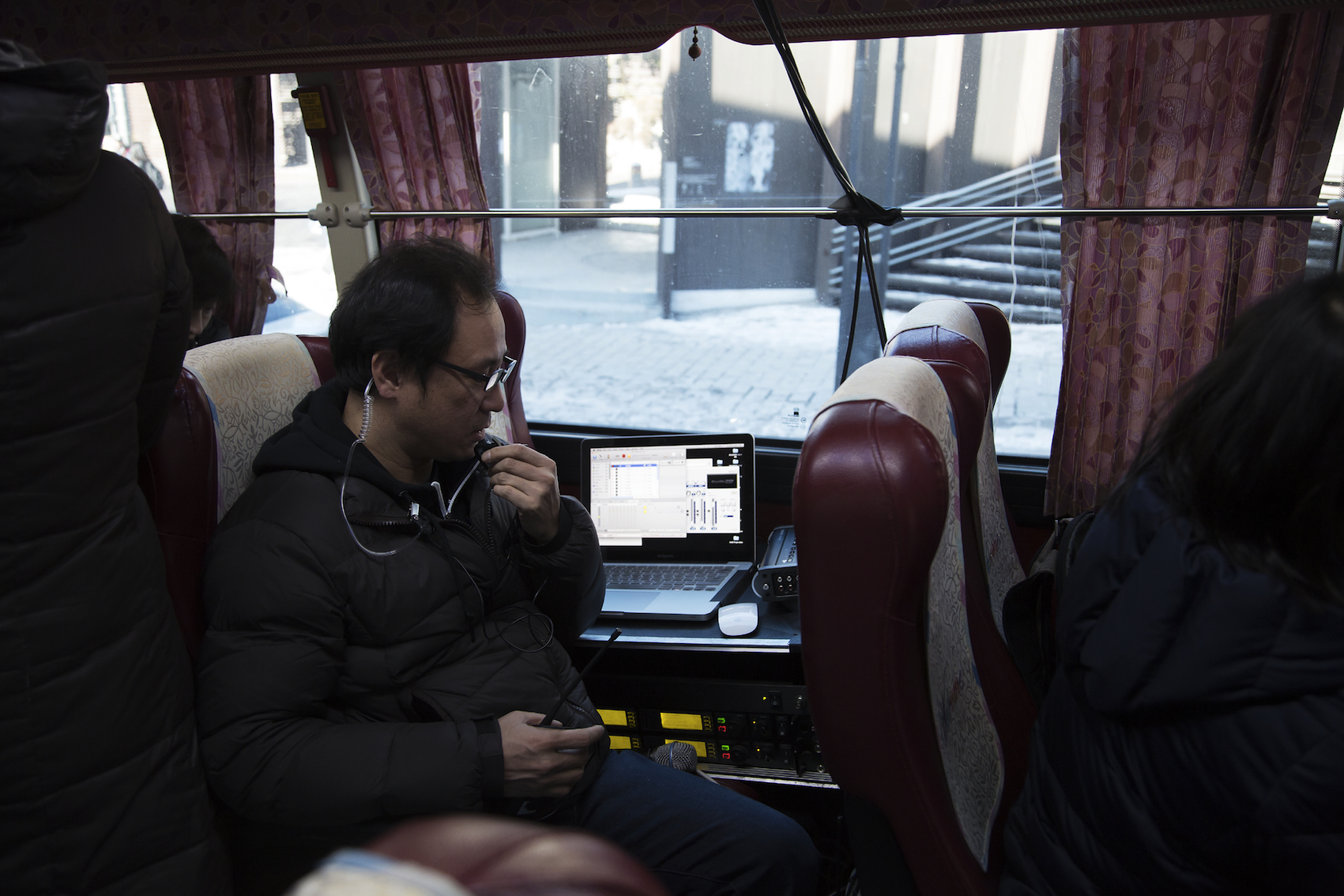
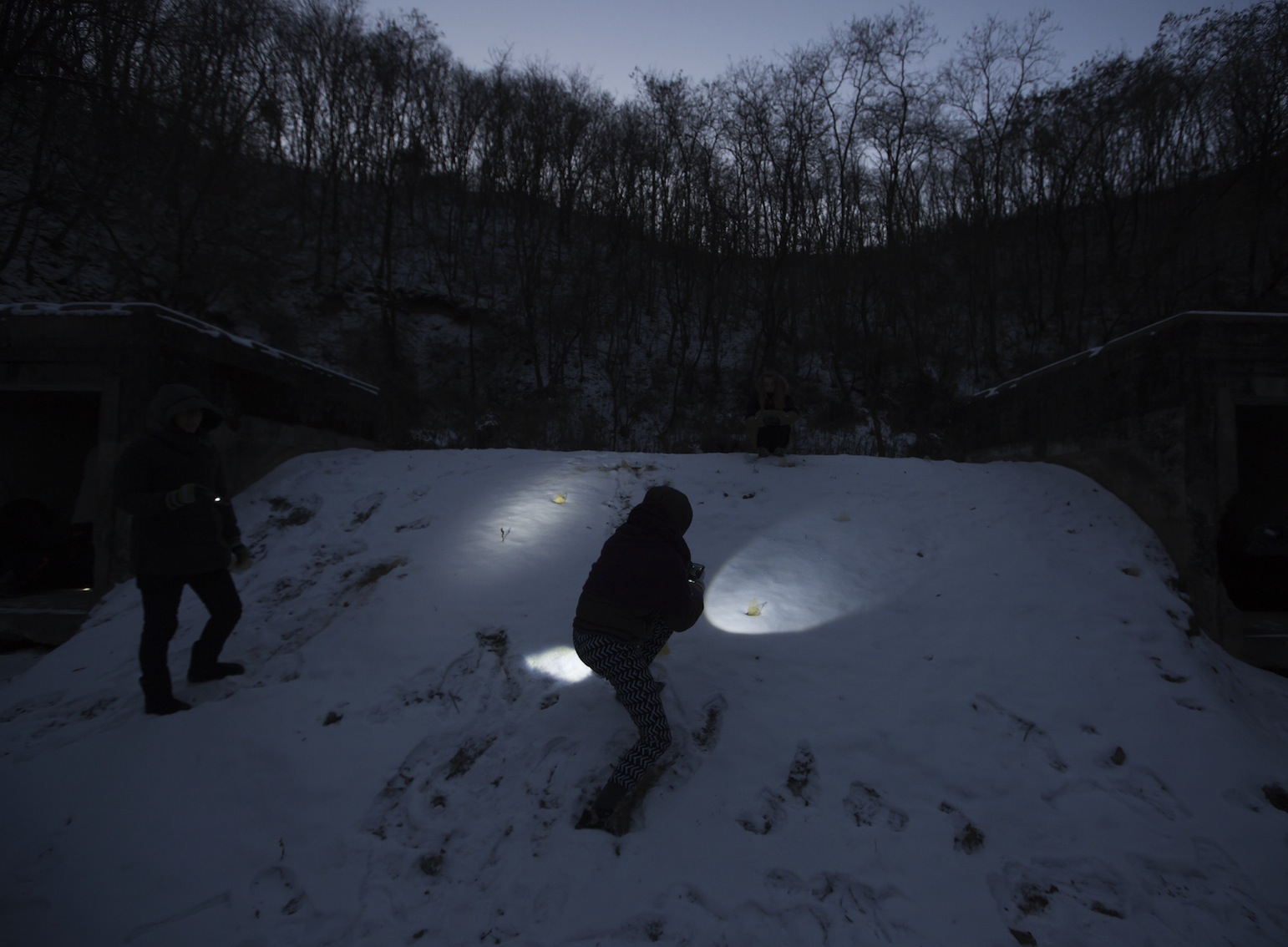
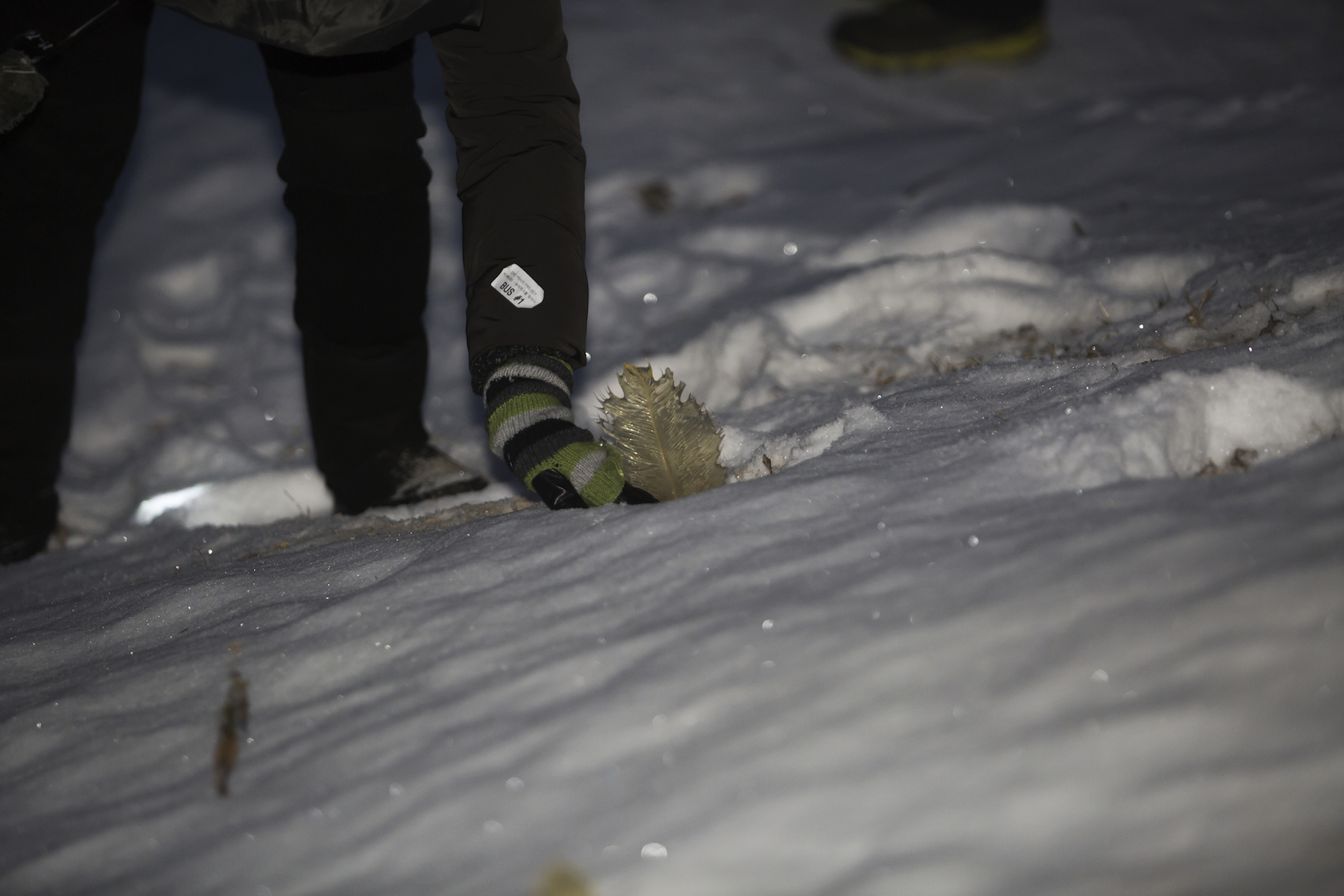

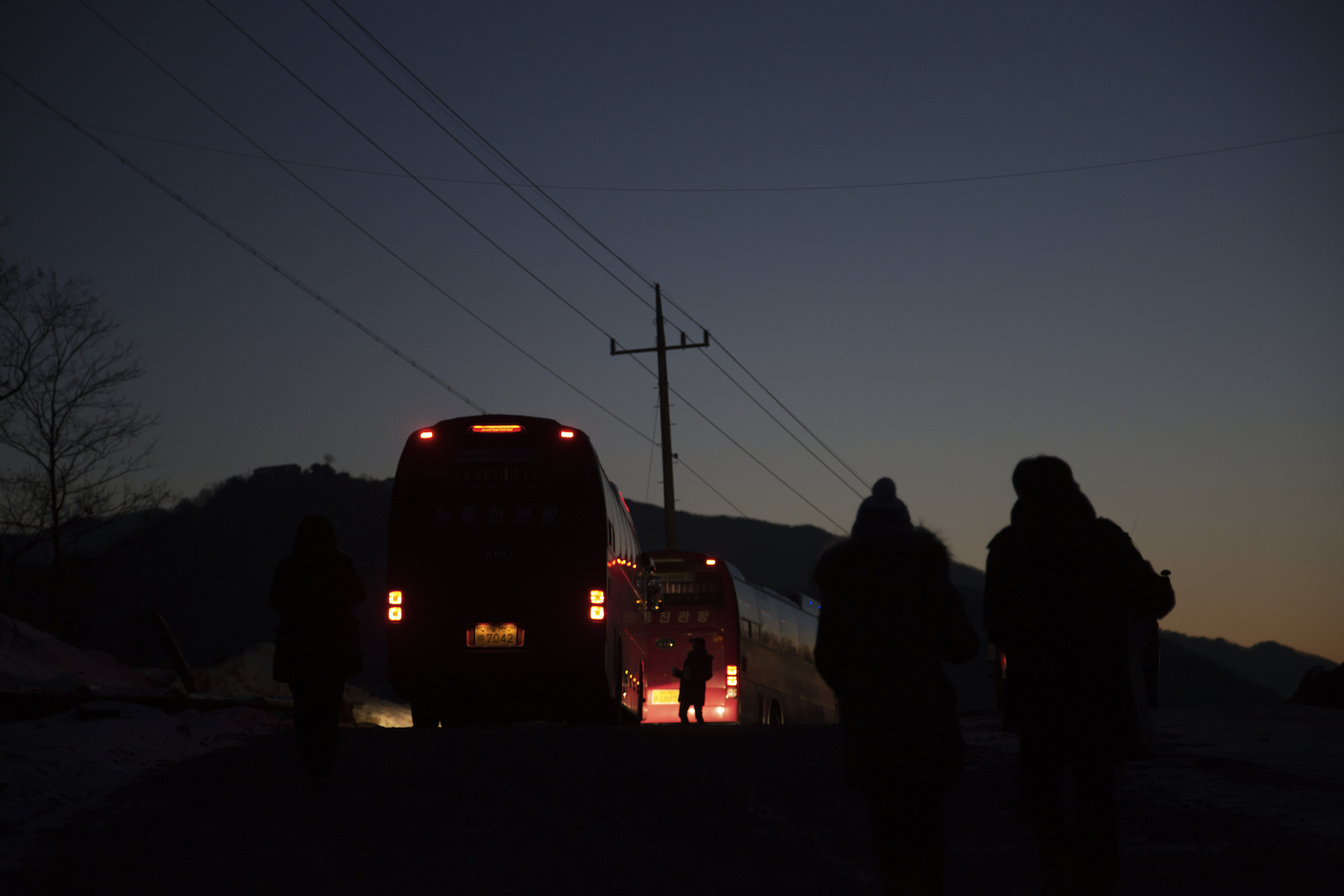
Monument300 – Chasing Watermarks is an on-going project searching for the 300 people who perished from the site of Waterworks Center in Cheorwon. Located at Sayo-ri, Cheorwon-eup, Cheorwon-gun, Gangwon-do, the Waterworks Center was the first water supply facility constructed in Gangwon-do in 1936 during the Japanese colonial period. It was designated as the Registered Cultural Heritage No.160 in 2005. Remains of water reserve tanks and water towers still can be found on site. The sign standing at the entrance reads “After Korea became independent, the area was ruled by the communist North and witnessed the Korean War. And here, about 300 people accused of being pro-Japaneses and anti-communists were shot or drowned alive inside the water tanks.” When Minouk Lim faced this peculiar description represented only by the number 300, she became curious of what had actually happened. She began searching for the traces left behind by the people suggested by this number with sociologist Sunghoon Han (Research Professor, Institute for History and Space Studies at Yonsei University). Yet it was impossible to access any relevant references in any forms. Moreover, the Waterworks Center was auctioned off and became a private property few years ago. And it became involved in lawsuits and disputes which made it even more difficult for an individual to physically approach the premises. Perhaps the Monument300 – Chasing Watermarks project may be the last visit to the location. How did the people who only exist as a number on the signage in front of the site die and disappear away like flowing water? The project thus starts from imagining their traces and their names that have been forgotten by the community and that are soon to be concealed eternally after privatization of the land. It is a journey searching for the identity of the place where the conventional description of ‘tragic scene of history’ and the paradoxical definition of ‘security tourist site’ cross their paths.
The performance, which takes place on December 18, 2014, announces the embark of this journey. In the bus traveling from Seoul to Cheorwon’s Waterworks site, passengers will together listen to the Cine Radio, a sound collage of testimonies and music in various genres. Monument300 – Chasing Watermarks assumes the 300 who disappeared from the site did not died but only drifted downstream and survived in somewhere. And like a live radio show with audiences present at the studio, the Cine Radio shares conversations about their whereabouts. The sound source of the Cine Radio is a mixture of documentary and fictional factors, and the bus heading towards Cheorwon becomes the scene of a road movie.
When the bus finally arrives at Cheorwon Waterworks site, passengers will find a landscape hiding transparent objects that are monuments of some sort. They have to make each step with caution as if they are dodging “landmines.” They will have to use hand lanterns to find those hidden monuments. The monuments have to be discovered first to be preserved. Whoever finds one informs the artist of the number written on the object and participates in the “documentation of future information.” The objects were inspired by the transparent “digital watermarks.” For instance, paper money has a portrait drawn on it that is only visible when held in the light, and this image is a watermark. Watermark is hidden because it is transparent and reacts to light. Accordingly it also refers to the technology of inserting and managing classified information like copyrights while the information inserted into the watermark is stored in a form that cannot be easily reproduced. However, as there are yet no information that can be inserted into the watermarks hidden in the site of Waterworks Center, they become monuments that cannot commemorate, a fragile and transparent beings looking for the information to be found in the future and its documentations. Resembling wings soaked in water, the 300 “monumental landmines” are frail and transforms the place they reside into a sensitive one.
If more than 300 visitors discover the objects simultaneously and shine the light on them at the same time, the performance and the monuments will finally become whole. But if not done simultaneously, the monuments will remain as scattered truths and impossible markers that can never stand completely. The unseen will reveal its meaning and identity gradually through the eyes and the footsteps.